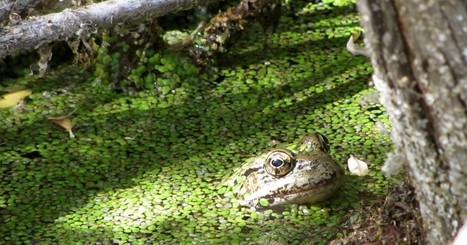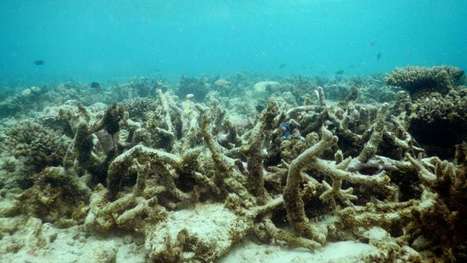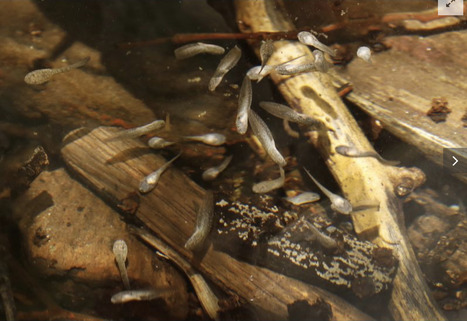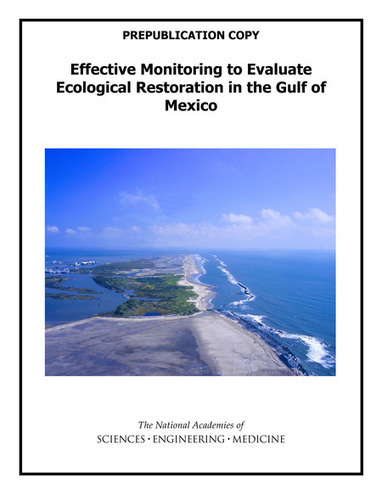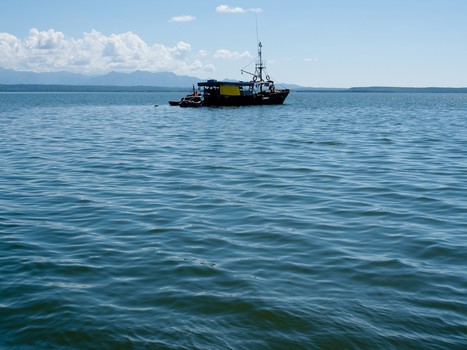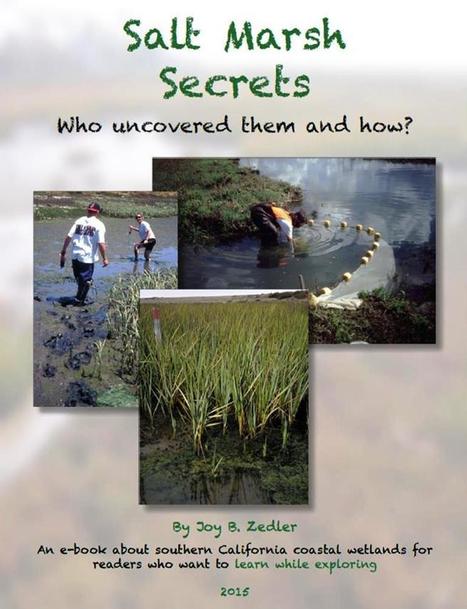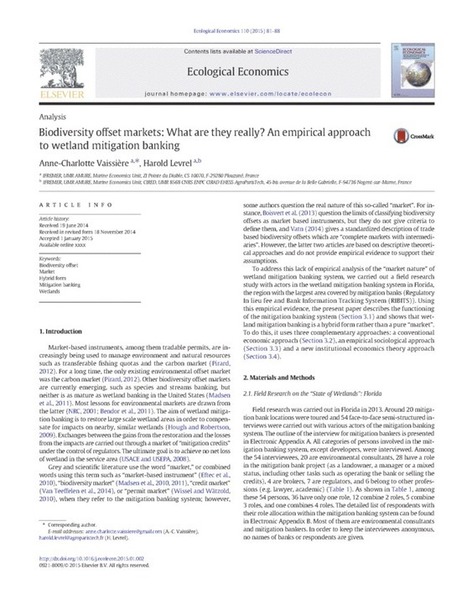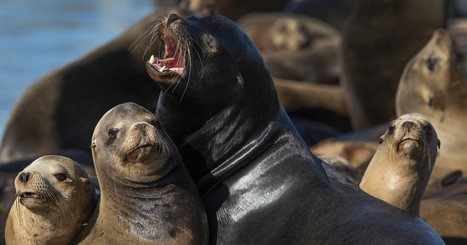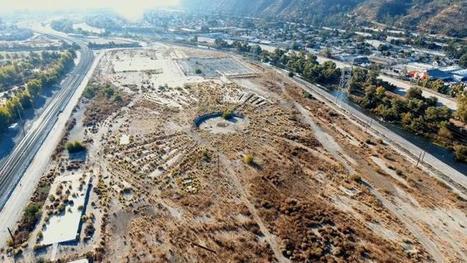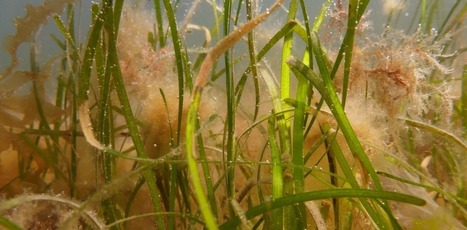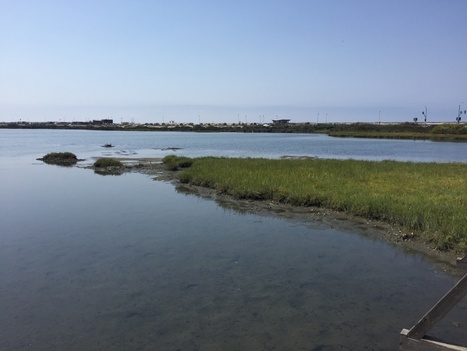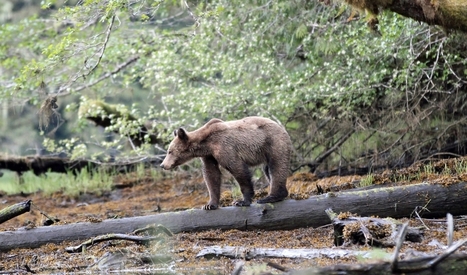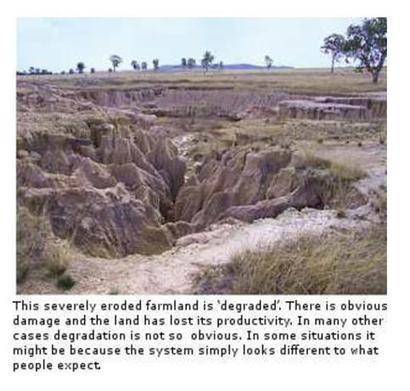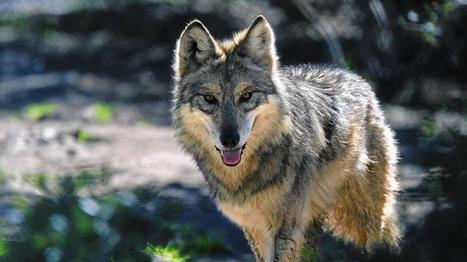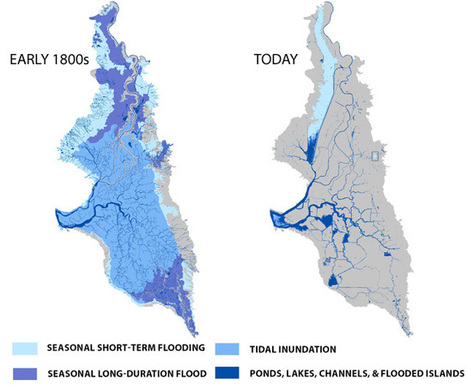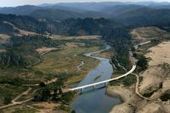 Your new post is loading...
 Your new post is loading...

|
Scooped by
PIRatE Lab
|
Slammed by heavy winds and bearing precious amphibian cargo, the helicopter heaved skyward from a remote mountain ranch on the Baja California Peninsula.

|
Scooped by
PIRatE Lab
|
The Great Barrier Reef is in trouble. Not only do sections of it look bad, but they sound bad too. And this, it turns out, may be yet another barrier to reef recovery. In a new study published this week, a team led by Tim Gordon, PhD candidate in a marine biology from the University of Exeter, recorded sounds made by coral reefs before and after they were damaged and tested how the sounds changed the response of fish searching for a reef to settle on.

|
Scooped by
PIRatE Lab
|
WASHINGTON -- USDA is making available up to $40 million in technical and financial assistance to help eligible conservation partners voluntarily protect, restore and enhanc

|
Scooped by
PIRatE Lab
|
Federal biologists on Tuesday take steps to release hundreds of yellow-legged frog tadpoles reared at the Los Angeles Zoo in carefully selected historic haunts in the San Gabriel Mountains suitable for one of the rarest amphibians in the world.

|
Scooped by
PIRatE Lab
|
Over the course of a few days in early January, several dozen young conservation workers from Alabama and four other states gathered at Camp Beckwith in Baldwin County for training. But the goal wasn't just to train a handful of people in the labor of forestry and coastal cleanup. It was something considerably bigger.

|
Scooped by
PIRatE Lab
|
A plan for turning a former rail yard next to the Los Angeles River into park space, wetlands and other amenities could cost more than $252 million, city analysts said in a report Thursday.

|
Scooped by
PIRatE Lab
|
Download a PDF of "Effective Monitoring to Evaluate Ecological Restoration in the Gulf of Mexico" by the National Academies of Sciences, Engineering, and Medicine for free. Description: Gulf Coast communities and natural resources suffered extensive direct and indirect damage as a result of the largest accidental oil spill in US history, referred to as the Deepwater Horizon (DWH) oil spill. Notably, natural resources affected by this major spill include wetlands, coastal beaches and barrier islands, coastal and marine wildlife, seagrass beds, oyster reefs, commercial fisheries, deep benthos, and coral reefs, among other habitats and species. Losses include an estimated 20% reduction in commercial fishery landings across the Gulf of Mexico and damage to as much as 1,100 linear miles of coastal salt marsh wetlands.
This historic spill is being followed by a restoration effort unparalleled in complexity and magnitude in U.S. history. Legal settlements in the wake of DWH led to the establishment of a set of programs tasked with administering and supporting DWH-related restoration in the Gulf of Mexico. In order to ensure that restoration goals are met and money is well spent, restoration monitoring and evaluation should be an integral part of those programs. However, evaluations of past restoration efforts have shown that monitoring is often inadequate or even absent.
Effective Monitoring to Evaluate Ecological Restoration in the Gulf of Mexico identifies best practices for monitoring and evaluating restoration activities to improve the performance of restoration programs and increase the effectiveness and longevity of restoration projects. This report provides general guidance for restoration monitoring, assessment, and synthesis that can be applied to most ecological restoration supported by these major programs given their similarities in restoration goals. It also offers specific guidance for a subset of habitats and taxa to be restored in the Gulf including oyster reefs, tidal wetlands, and seagrass habitats, as well as a variety of birds, sea turtles, and marine mammals.

|
Scooped by
PIRatE Lab
|
Given the dual threats of climate change and increased tourism, conservationists are attempting to gather all the data they can before it’s…

|
Scooped by
PIRatE Lab
|
Some $25 billion is headed to the five Gulf states that were devastated in the 2010 BP oil disaster. Just a fraction of the government fines and court settlements have been paid — but not all of it will end up repairing the damaged ecosystem. Louisiana, which suffered the most damage in the spill, has used the fines and settlements to rebuild its coast, one that was already fragile and disappearing. When it took a direct hit from the BP disaster, oil choked off vegetation that is critical to holding together what land is left.

|
Scooped by
PIRatE Lab
|
This e-book records favorite stories about salt marsh secrets that my collaborators and I uncovered while studying southern California coastal wetlands, from the 1970s to date. In 1986, we became the Pacific Estuarine Research Lab.

|
Scooped by
PIRatE Lab
|
How might we use offsets for existing or future impacts to biological diversity via mitigation banks?

|
Scooped by
PIRatE Lab
|
This author taught three-day workshop will cover the framework and issues associated with conducting an ecological restoration project.

|
Scooped by
PIRatE Lab
|
"There’s a direct connection between what we’re doing to enhance the environment and what we’re doing to enhance economic opportunity.”
|

|
Scooped by
PIRatE Lab
|
The welcome mat for California sea lions has been rolled out in San Francisco, but is nowhere to be seen in La Jolla and many of the state's fishing ports.

|
Scooped by
PIRatE Lab
|

|
Scooped by
PIRatE Lab
|
Freshwater ecosystems are in trouble. For centuries -- and until very recently -- rivers and ecosystems were always managed using history as a reference point. As we move into an era of uncertainty su

|
Scooped by
PIRatE Lab
|
A documentary exploring the past, present, and visions for the future of Taylor Yard

|
Scooped by
PIRatE Lab
|
Trowels and spades are being put to use in the sea.

|
Scooped by
PIRatE Lab
|
A restoration project in 2006 revived Orange County's wetlands preserve, turning into a favorite nesting ground for migratory birds and a habitat for sea life. But the state fund set aside to keep the preserve thriving is running low on cash.

|
Scooped by
PIRatE Lab
|
Canada's "War in the Woods" ends with a land agreement that could save forests around the world.

|
Scooped by
PIRatE Lab
|

|
Scooped by
PIRatE Lab
|
The Santa Monica Mountains Conservancy awarded the grant to help wrap up the comprehensive study

|
Scooped by
PIRatE Lab
|
The only wolf ever documented in Southern California may have been a victim of mistaken identity nearly a century ago.

|
Scooped by
PIRatE Lab
|
Startling maps in a new report on the Sacramento-San Joaquin Delta show the dramatic loss of marshlands that once supported a vast array of wildlife.

|
Scooped by
PIRatE Lab
|
The deep-blue Ten Mile River snakes down from the mountains through redwood forests and coastal wetlands near Fort Bragg before it flows past rolling sand dunes into the sea. "What we are doing is undoing a 100-year legacy of forestry damage," said Jason Pelletier, director of the Nature Conservancy's North and Central Coast regions, as he stood next to the river where it winds over flatlands before emptying out at the fog-shrouded beach at MacKerricher State Park. A significant watershedThe project is important because a third of all the coho along the Mendocino coast breed in the Ten Mile River, which got its name because it was 10 miles north of the mill on the Noyo River in Fort Bragg, where the ancient redwood forests of the Coast Range were turned into lumber. Coho, also known as silver salmon, once swam in huge numbers up North Coast rivers, providing ample food for American Indians and grizzly bears. Detecting ancient wetlandsDan Porter, the North Coast ecologist for the conservancy, said sophisticated airborne laser and light sensing technology called Lidar was used to detect ancient imprints along the river and develop a high-resolution topographic map of the former wetlands. Conservation easementIn June, the Nature Conservancy, with help from the Conservation Fund, the State Coastal Conservancy and Wildlife Conservation Board, paid $3.8 million for a conservation easement on the 872-acre Smith Ranch. The conservancy, in turn, will be able to do wetlands and fish habitat restoration work on 2 miles of the river's south fork. The Hawthorne Timber Co. has been working with Trout Unlimited over the past decade on fisheries restoration at the headwaters, Pelletier said, meaning the entire river from the ocean to the forested mountaintop soon could be returned to a more natural condition that supports a vibrant salmon population. The entire project is being monitored by the California Department of Fish and Wildlife and the National Oceanic and Atmospheric Administration, which are trying to develop technical standards and protocol for salmon recovery efforts across 300 miles of coastal watershed lands from San Francisco Bay to the Oregon border.
|
 Your new post is loading...
Your new post is loading...
 Your new post is loading...
Your new post is loading...





